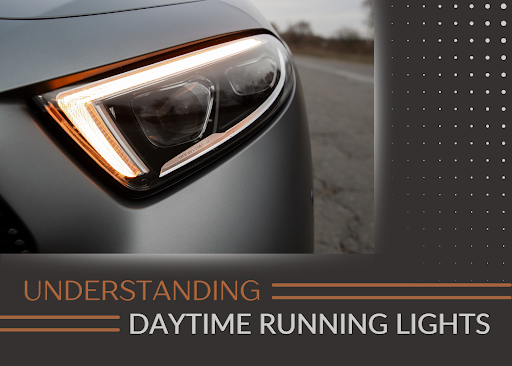
Daytime Running Lights (DRLs) are a standard feature in many modern vehicles, but there’s still some confusion about what they do and when they should be used. In this blog, we’ll break down the function of DRLs, how they differ from headlights, and why they’re an essential safety feature for all drivers.
What are Daytime Running Lights?
Daytime Running Lights are headlights that automatically turn on when you start your vehicle, designed to increase visibility during daylight hours. Their primary purpose is to make your vehicle more noticeable to other drivers, especially in conditions where visibility is reduced, such as overcast days or on roads with a lot of shade.
What’s the Difference Between DRLs and Headlights?
DRLs are a lower intensity light compared to your regular headlights. When your headlights are on, both front and rear lights illuminate. However, DRLs only activate the front headlights, leaving the tail lights off. While they improve your vehicle’s visibility to other drivers during the day, they don’t help you see the road better.
When Do DRLs Activate?
In most modern vehicles, DRLs automatically turn on as soon as you start the engine. In contrast, regular headlights need to be manually activated, typically by turning a knob or pressing a button. Some vehicles have automatic light systems, headlights will turn on when ambient light levels decrease (for example, at dusk, in tunnels, or in adverse weather conditions).
Understanding Visual Cues
It’s important to recognize the visual cues that differentiate vehicles with DRLs from those with full headlights on:
- Daytime Running Lights: Front headlights are on, but the rear tail lights remain off.
- Full Headlights: Both front and rear lights are activated, improving visibility in low-light conditions.
As a driver, it’s essential to be aware of these differences, particularly when you’re approaching or passing vehicles with DRLs.
Why are Daytime Running Lights Important?
By increasing visibility during daylight hours, DRLs help reduce accidents, particularly front-end collisions, by making vehicles more noticeable. They are especially helpful when driving on highways or in areas where traffic may blend in with surrounding landscapes.
Tips for Safe Driving With DRLs
- Always be aware of vehicles with DRLs, especially when merging or changing lanes. Make sure you can clearly see the vehicle’s position in your rearview mirror and take extra caution when maneuvering in busy areas.
- If you drive in low visibility conditions at night, remember to switch on your regular headlights to activate both front and rear lights for optimal visibility.
Conclusion:
Daytime Running Lights (DRLs) play an essential role in enhancing the visibility of vehicles, making driving safer for everyone on the road. While DRLs are beneficial, it’s important to understand their limitations, such as the fact that they do not activate tail lights. Drivers should always ensure their full headlights are turned on when driving in low-light conditions to maintain optimal visibility and safety.
If you’re interested in learning more about adaptive driving technologies or need assistance with driving assessments, Driving to Independence is here to support your journey. Whether you’re looking for personalized driving evaluations, adaptive equipment recommendations, or driving lessons, we are dedicated to enhancing mobility and helping you achieve greater independence on the road.
If you’re ready to take the next step toward more confident and safer driving, reach out to Driving to Independence today!
